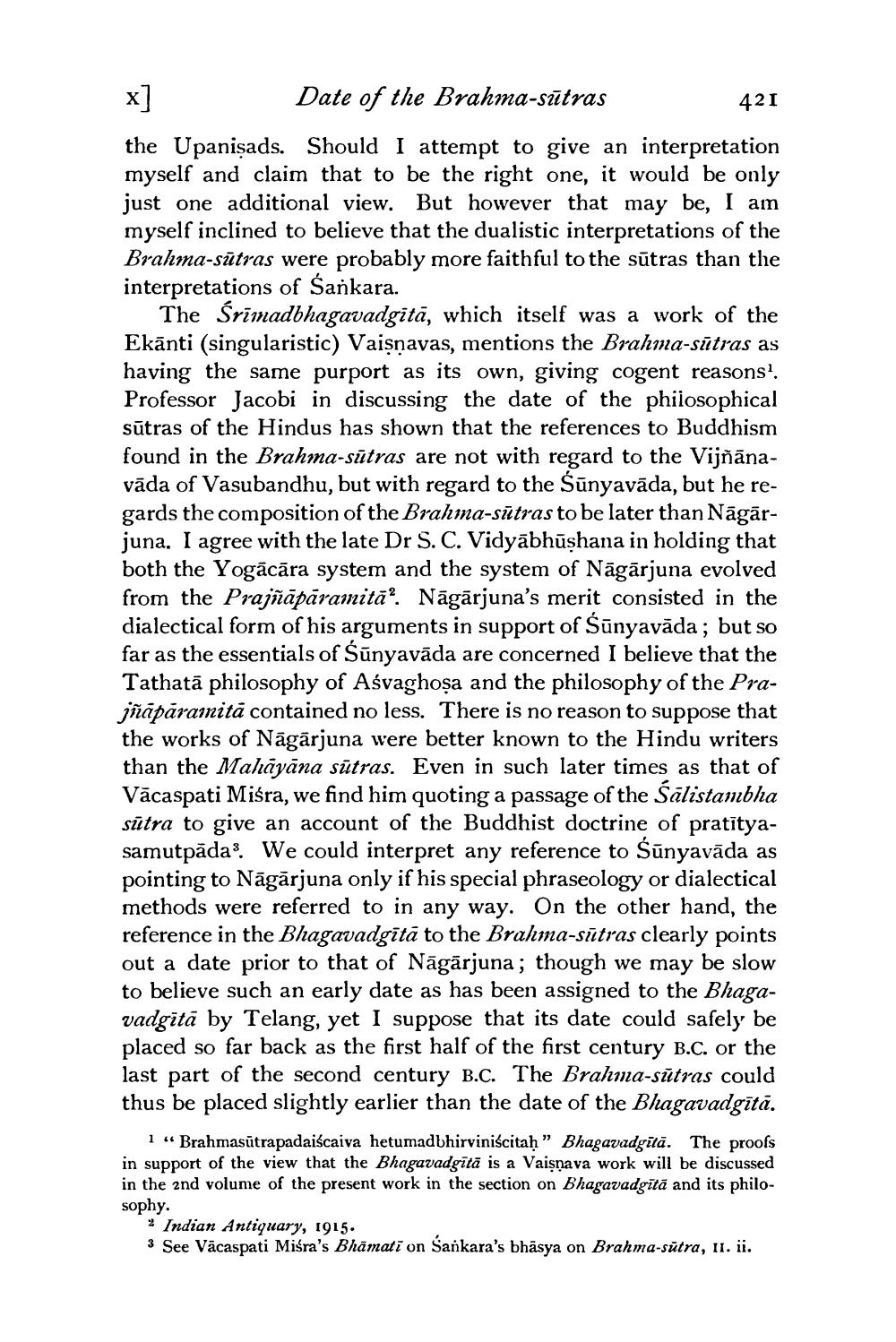________________
Date of the Brahma-sūtras
421
the Upanişads. Should I attempt to give an interpretation myself and claim that to be the right one, it would be only just one additional view. But however that may be, I am myself inclined to believe that the dualistic interpretations of the Brahma-sūtras were probably more faithful to the sūtras than the interpretations of Sankara.
The Srimadbhagavadgitā, which itself was a work of the Ekānti (singularistic) Vaisnavas, mentions the Brahma-sūtras as having the same purport as its own, giving cogent reasons'. Professor Jacobi in discussing the date of the philosophical sūtras of the Hindus has shown that the references to Buddhism found in the Brahma-sūtras are not with regard to the Vijñānavāda of Vasubandhu, but with regard to the Śūnyavāda, but he re gards the composition of the Brahma-sūtras to be later than Nāgārjuna. I agree with the late Dr S. C. Vidyābhūshana in holding that both the Yogācāra system and the system of Nāgārjuna evolved from the Prajñāpāramitā”. Nāgārjuna's merit consisted in the dialectical form of his arguments in support of Śūnyavāda; but so far as the essentials of Sūnyavāda are concerned I believe that the Tathatā philosophy of Ašvaghoşa and the philosophy of the Prajñāpāramitā contained no less. There is no reason to suppose that the works of Nāgārjuna were better known to the Hindu writers than the Mahāyāna sūtras. Even in such later times as that of Vācaspati Miśra, we find him quoting a passage of the Sālistambha sūtra to give an account of the Buddhist doctrine of pratītyasamutpādas. We could interpret any reference to Sūnyavāda as pointing to Nāgārjuna only if his special phraseology or dialectical methods were referred to in any way. On the other hand, the reference in the Bhagavadgitā to the Brahma-sūtras clearly points out a date prior to that of Nāgārjuna; though we may be slow to believe such an early date as has been assigned to the Bhagavadgitā by Telang, yet I suppose that its date could safely be placed so far back as the first half of the first century B.C. or the last part of the second century B.C. The Brahma-sūtras could thus be placed slightly earlier than the date of the Bhagavadgitā.
1 "Brahmasūtrapadaiścaiva hetumadbhirviniścitaḥ” Bhagavadgitā. The proofs in support of the view that the Bhagavadgitā is a Vaisnava work will be discussed in the 2nd volume of the present work in the section on Bhagavadgitā and its philosophy.
% Indian Antiquary, 1915. 3 See Vācaspati Misra's Bhāmati on Sankara's bhāsya on Brahma-sútra, 11. ii.




